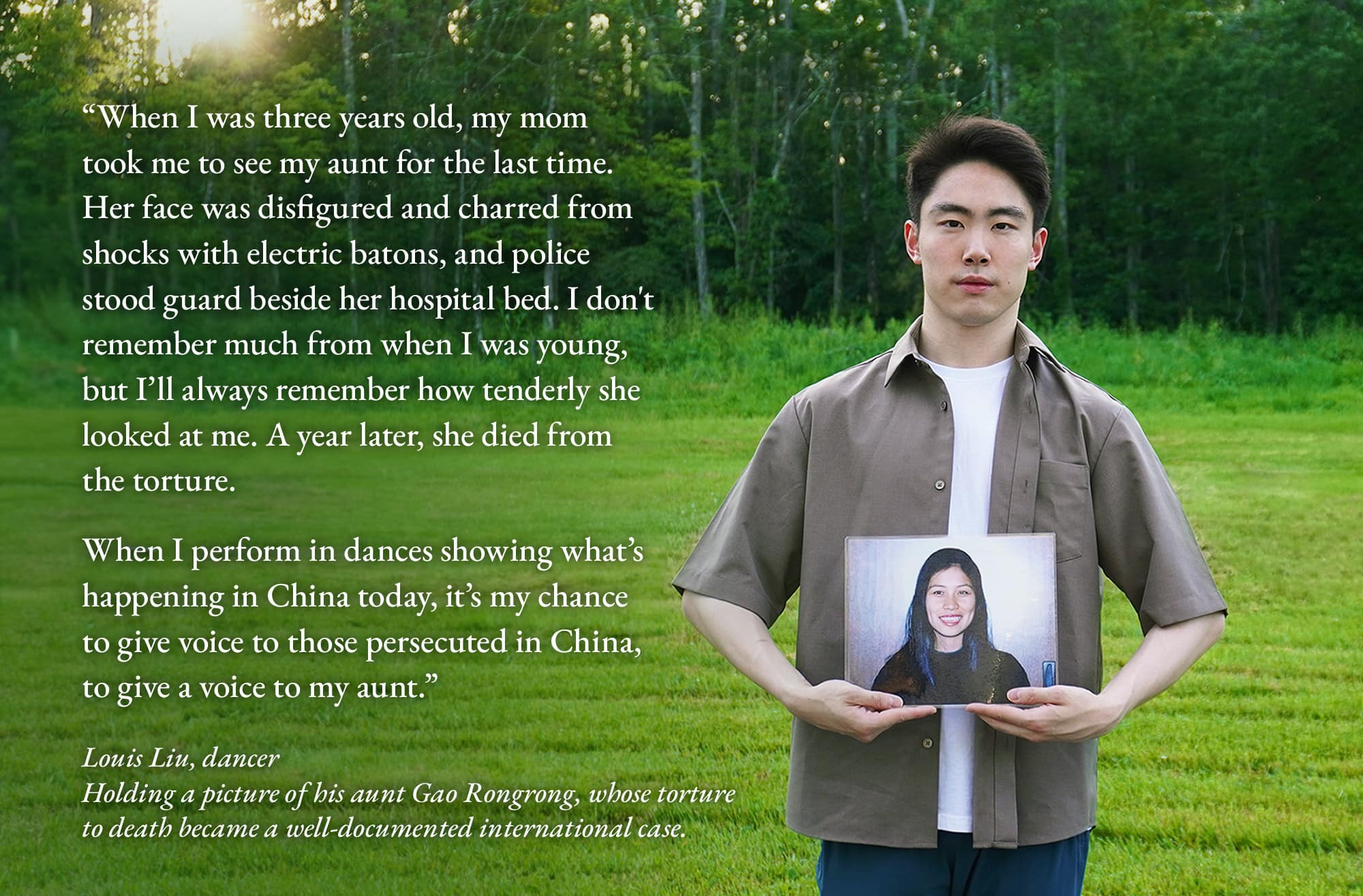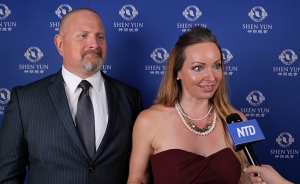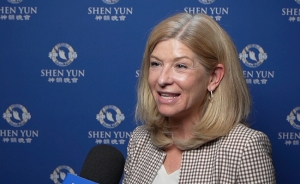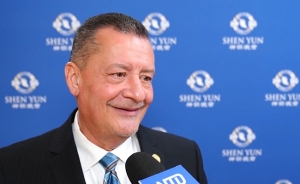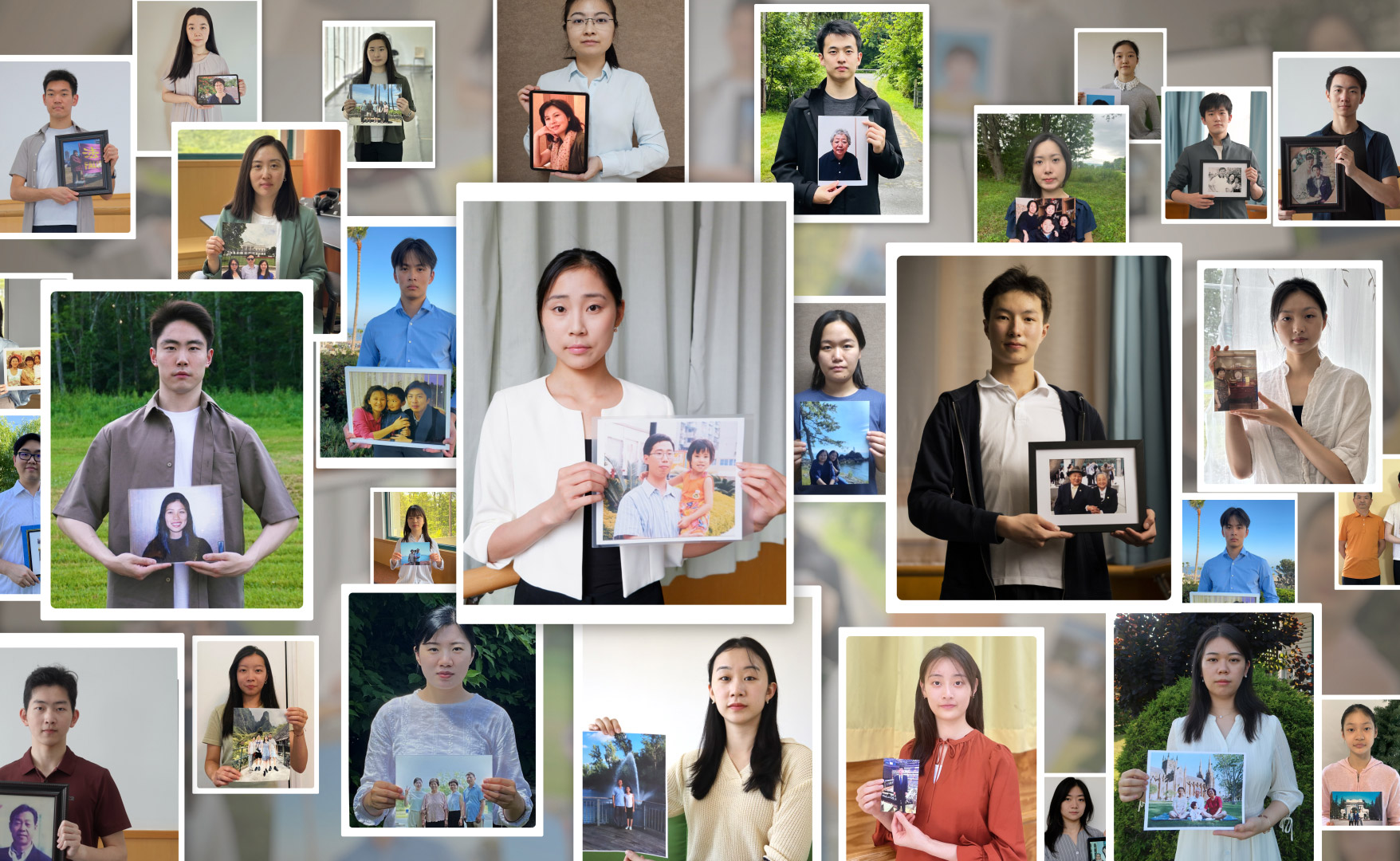
7.20: When Persecution Hits Home
OCEANS APART, GIVING FAMILY A VOICE
An ocean away, human tragedy hits close to home for many Shen Yun performers. The story of Falun Gong and its persecution in China is intertwined with the origins of Shen Yun. It is dear to our hearts and is important for the world to know about.
Earlier this year, we conducted a survey among Shen Yun performers, and found that 92 of them had family directly impacted by the persecution of Falun Gong in China. Mothers and fathers, aunts and uncles, or perhaps they themselves had been imprisoned, sent to labor camps, tortured. They had been threatened, barred from school, orphaned. Here are their stories.

July 20, 1999 is when it all began.
In the late 1990s, the spiritual practice of Falun Gong, interchangeably called Falun Dafa, had become widely popular in China. According to Chinese government estimates, as many as 100 million people practiced it. The Chinese Communist Party decided that was too many…

The spiritual practice had been around in one form or another for generations, part of a lineage of disciplines passed down secretly from master to disciple. But in 1992, Mr. Li Hongzhi introduced Falun Dafa to the public. He taught five meditative exercises, and explained how the practice’s principles of truthfulness, compassion, and forbearance, aligned with the characteristics of the universe. He spoke of how the purpose of qigong, or “energy practices” like tai chi, was not just for healing and fitness, but for spiritual and moral elevation. And in an environment where many people used qigong to make money, he said practicing Falun Gong will always be free. He was okay with people getting pirated copies of his books and later even put them all online for free.
In seven short years, mostly by word of mouth, Falun Gong became the most popular practice in China. Parks across the country would be brimming at dawn with groups of people doing slow-movement exercises before going to work. The government honored Mr. Li with awards for his contributions, and reported positively on state-run television about Falun Gong’s health benefits.
Then everything changed…

As the practice became increasingly popular, Communist Party leader Jiang Zemin grew increasingly afraid of it. Jiang created an extralegal Gestapo-like force called “The 6-10 Office” and, in spite of the advice of top Party leaders, brought the full force of the regime down on Falun Gong overnight.
On July 20, 1999, thousands of Falun Gong practitioners were rounded up and sent to detention centers. Two days later, the same state-run media that had recently praised Falun Gong began airing anti-Falun Gong propaganda. Television, radio, and newspapers reported nothing but attacks on Falun Gong and character assassinations on Mr. Li around the clock with programs that had been secretly prepared for months.

As days turned to months, and months to years, hundreds of thousands of Falun Gong practitioners were put through show trials and sent to jail or administratively sent to years in labor camps without ever seeing a day in court. When relatives would go to their local government or to Beijing to ask what happened to their kidnapped family members, they would then be arrested, too.
Most often, they started going to Tiananmen Square.

Outside of China, people who practiced Falun Gong began receiving reports of the persecution. People just like them in China were being arrested for no crime other than their faith, imprisoned, brutally beaten, tortured, and even killed. Documented death cases mounted, first in the hundreds, then in the thousands. But they knew it was just the tip of the iceberg, the little bit of information that was smuggled out of China, often at great risk and sometimes at heavy cost.
With hundreds of thousands, maybe even millions of Falun Gong practitioners in China’s incarceration system, evidence began emerging, and then mounting, that these healthy prisoners were being murdered by the state on a large scale for their organs. Exposing the persecution became a matter of life and death.

Falun Gong practitioners around the world used the skills that they had to expose the atrocities. Some handed out flyers. Others held sit-ins outside Chinese embassies. Yet others in Washington, Ottawa, and Geneva sought government attention. Some started media companies or websites.
And some were artists. What could they do with their skills?
In New York in 2006, these Falun Gong practitioners, including elite Chinese artists from around the world, created Shen Yun.
Many of these choreographers, composers, dancers, musicians, and singers escaped persecution themselves. Others had lost relatives or had family members languishing in prison still. The persecution felt close and urgent.
It still does.
{{gallery}}
As the persecution continues in China today, these artists take the stage night after night and tell this story. It is perhaps only a small part of a Shen Yun performance, only two of roughly twenty different dance and music numbers, each depicting a part of Chinese civilization in a different way.
But for the performers, and often for audience members, it is often the most memorable. It is not only a story of tragedy, but also of courage, faith, and hope.
And the story continues to unfold—in China, and on stages around the world.
Click here to watch full video.




